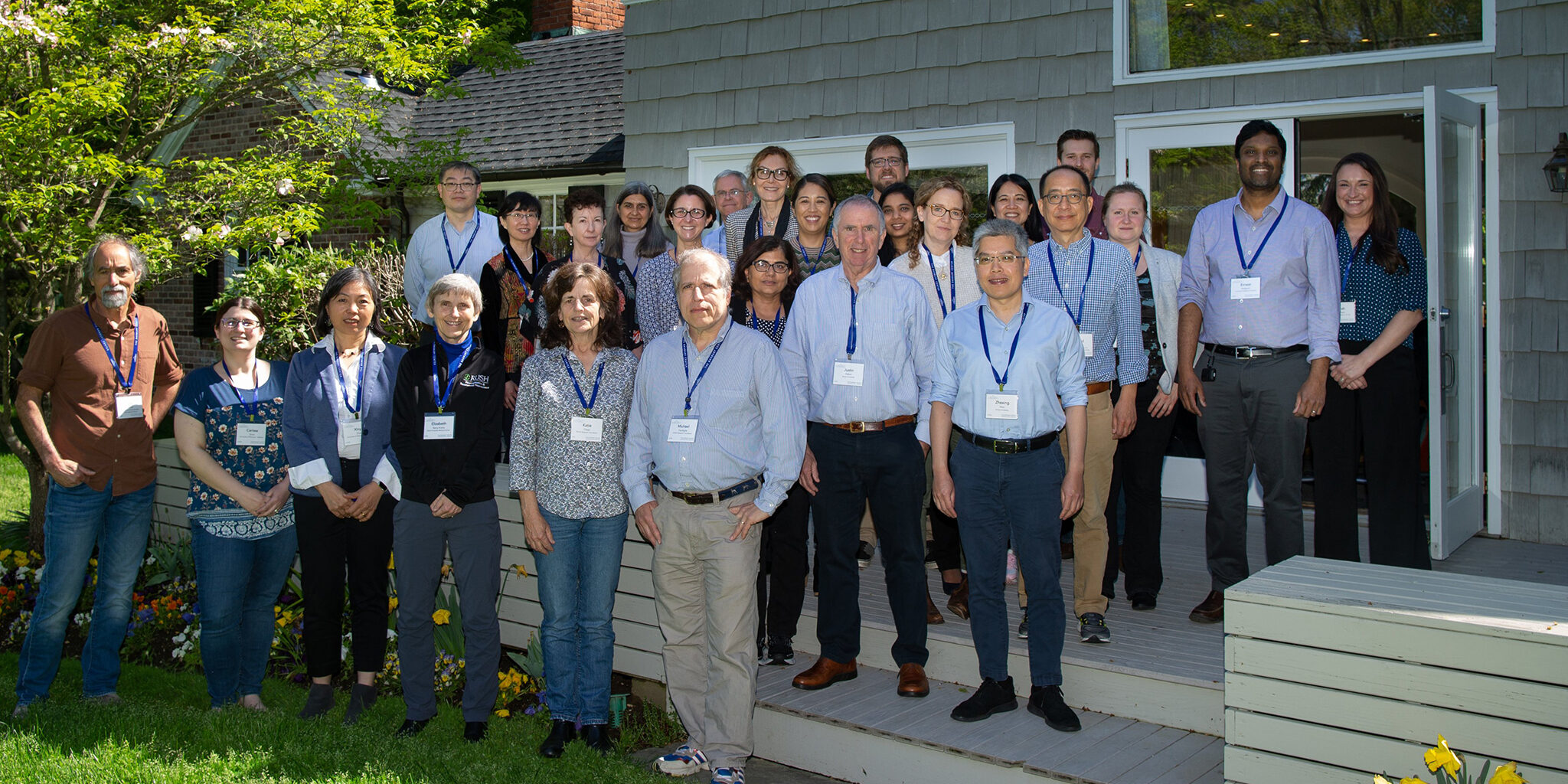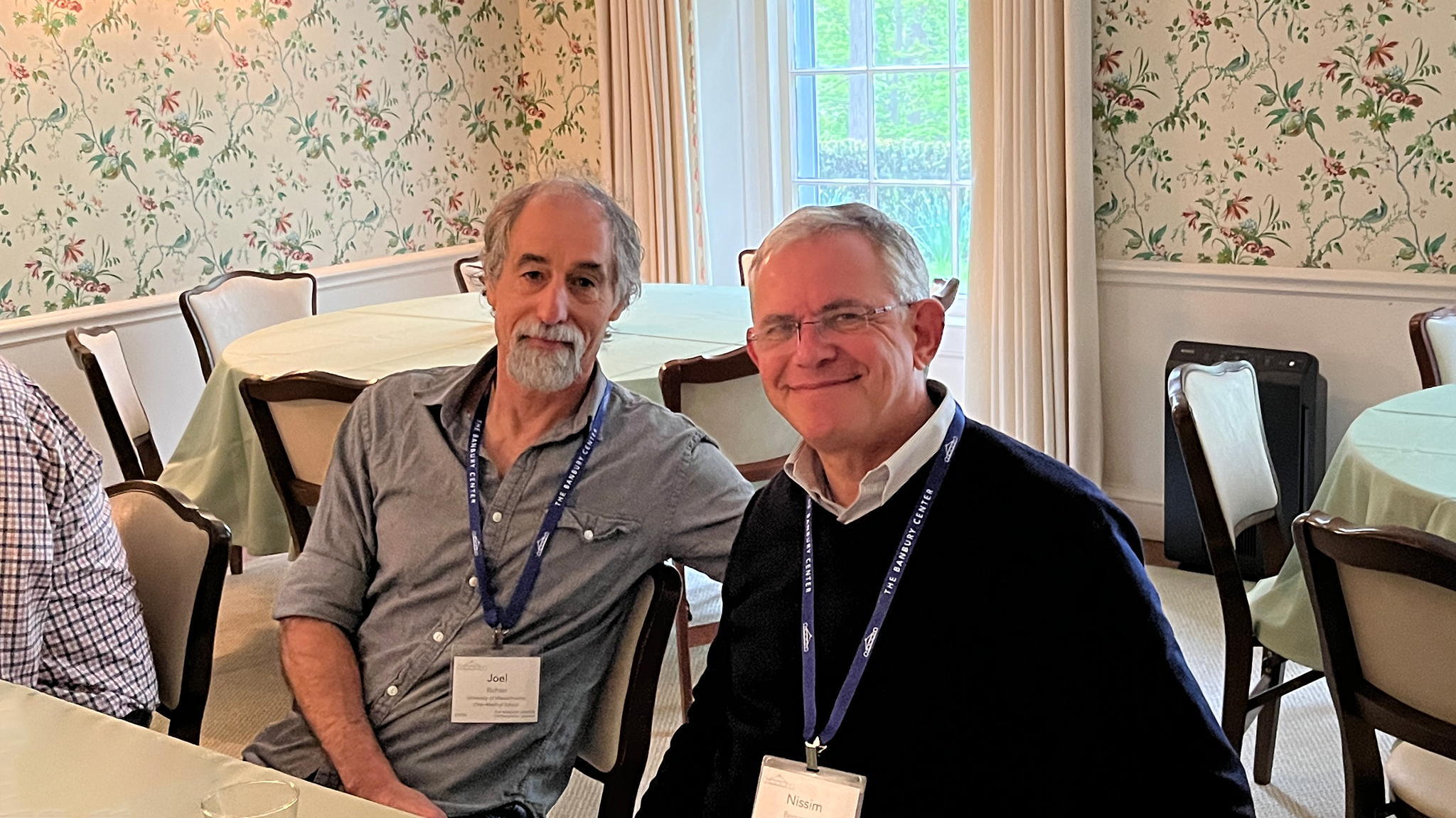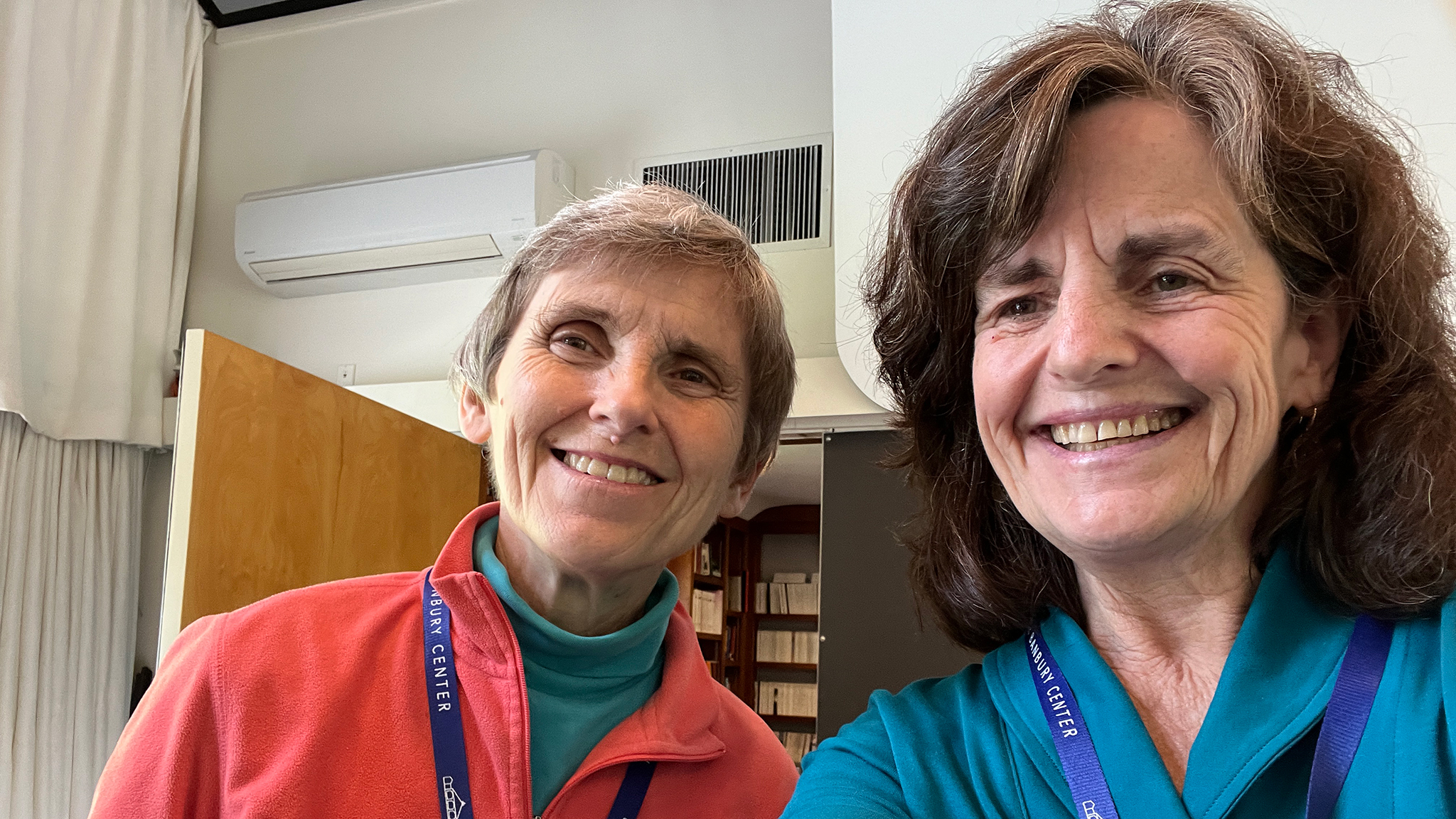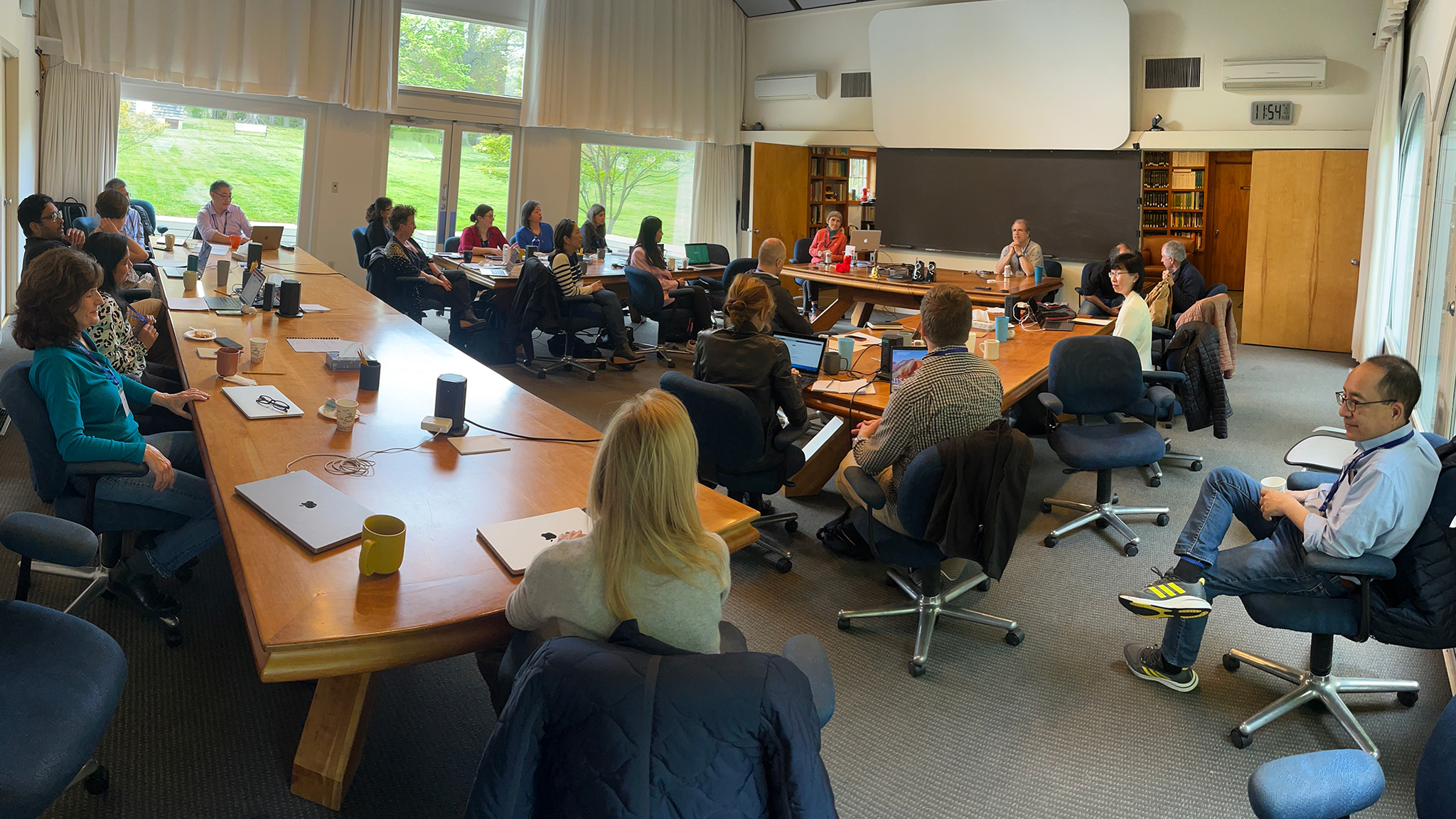Breakthrough Discoveries in Fragile X Research: Insights from Special Banbury Meeting on Curative Therapies

After several FRAXA-funded research projects obtained exciting new evidence showing the feasibility of protein replacement, gene reactivation, and gene therapy for Fragile X syndrome, FRAXA decided to organize a special meeting at the Banbury Center, a prestigious meeting facility at Cold Spring Harbor Laboratory in New York on May 1-3, 2023.
The goals of this meeting were to:
- Take advantage of these recent discoveries;
- Facilitate collaborations among experts in the field;
- Move these findings as quickly as possible into clinical trials for “definitive therapies” for Fragile X syndrome.
Antisense Oligonucleotide (ASO) Therapy: a Potential New Treatment Strategy for Fragile X Syndrome
The meeting began with presentations on recent findings from Fragile X model systems and from human Fragile X tissues which suggests the possibility of reactivating production of FMRP, the protein missing in Fragile X syndrome, using an antisense oligonucleotide (ASO) strategy.
This new type of genetically based therapy is currently in clinical trials for a number of different brain disorders such as Angelman Syndrome. Until now, no worthwhile targets for ASOs had been identified in Fragile X, but a newly identified abnormal messenger RNA appears to be interfering with the expression of the FMR1 gene, and targeting this abnormal mRNA with ASOs has been shown to restore production of FMRP in vitro.
Several attendees described their experiences in efforts to develop ASO based therapeutics for a number of different disorders. They all emphasized the importance of understanding the basic biology and tailoring the oligonucleotides to the specific requirements. While this necessarily involves some development, the overall development cycle is typically significantly shorter than that required for small molecules.
New Research Models for Fragile X Syndrome
Naturally, this requires testing in neurons and other brain cells, preferably in a whole brain. This raises a unique set of challenges. Fragile X animal models are all knockouts. They do not possess the trinucleotide repeat expansion resulting in transcriptional silencing. Much effort has gone into making knock-in mouse models for Fragile X, in which large trinucleotide repeats of over 400 repeats have been inserted into the mouse gene. However, mice do not appear to methylate and silence the gene the same way that humans do. This results in a good model of FXTAS, with a large trinucleotide repeat which is transcribed and causes toxic effects over time. However, these knock-in mice continue to produce protein, so they are not useful in testing reactivation strategies.
Several presenters at the meeting discussed alternative model systems, including grafting human Fragile X cells into mouse brains, using Fragile X syndrome patient derived stem cells to produce neurons, and functional organoids, or mini brains, in culture. There was also discussion of potential methods to modify the existing mouse model to silence the gene via methylation of the promoter, yielding a useful test bed. Several collaborations were formed around these projects with experiments scheduled in the near term.
Improving Fragile X Clinical Trial Design
Several of the most prominent clinical investigators in the field discussed state-of-the-art methods for conducting Fragile X syndrome clinical trials, with special emphasis on the methods which would be necessary for therapeutic strategies employing these potentially curative technologies. Most of these biological therapies are not possible through simple oral administration, so clinical investigators discussed the feasibility of routes of administration such as intrathecal injection, which is currently used in most ongoing ASO trials. They also discussed outcome measures necessary for evaluation of target engagement and treatment response in the brain. Recent advances in human electrophysiology have led to promising objective outcome measures which should be useful in clinical trials in addition to traditional clinical ratings.
Need for Resources from the Fragile X Community
However, virtually all attendees agreed that a significant need exists for more thorough examination of cerebrospinal fluid (CSF). There is currently no Fragile X CSF available for research, and strategies were discussed to obtain CSF samples from Fragile X subjects. Furthermore, while some brain tissue is available through several brain banks, the quality and quantity of tissues available was considered by the attendees at this meeting to be inadequate, and so multiple strategies to increase the availability of postmortem brain tissue were discussed. Greater efforts at recruitment are clearly needed. FRAXA is now launching partnerships with Autism BrainNet and COMBINEDBrain to include individuals with Fragile X syndrome.
Gene Reactivation Strategies: CRISPR and Beyond
Several other reactivation strategies were also presented and discussed in detail. Significant progress has been made using combinations of small molecules to reactivate expression of the FMR1 gene and production of protein. Editing the gene via CRISPR and related targeted methods is also looking increasingly feasible, and progress has been made with viral and synthetic vectors to deliver these components into brain cells. Again, only patient-derived cells in culture are appropriate for testing these methods at this point, but this work is feasible now and still needs to be done in most cases. Several collaborations were formed to conduct these experiments, which should be readily accomplished with current technology.
Other attendees discussed the development path for gene therapy using viral vectors. Progress has been made in the development of proprietary adenoviral vectors which allow for greater brain uptake and enhanced distribution, though accessibility to the central nervous system remains an issue which may not be overcome in the next few years.
Protein Replacement Strategies
Progress has also been made in replacing FMRP directly, either by using a Tat conjugate protein with truncated versions of FMRP, or by using mRNA vaccine technology to introduce the message, which is then translated into the protein. One question raised by attendees at the meeting was the potential for toxicity from over replacement of FMRP. Recent studies have shown that there is some margin for error in replacement. While YAC transgenics expressing 10 to 15 times the normal levels of FMRP clearly show adverse effects, gene therapy experiments in mice and rats clearly show that levels up to 2.5 times normal are therapeutic and well tolerated.
Timing of Treatment for Fragile X Syndrome
Timing of therapies is also a critical question provoking much discussion. Most previous efforts in gene therapy have focused on very early intervention, and this presents another set of challenges in Fragile X syndrome, as most patients are diagnosed around age 3. However, further elucidation of therapeutic windows may enable later treatment, though this presents a different set of technical challenges caused by a much larger brain.
Experiments with conditional knockout mice have suggested that restoration of protein production in the mice which is the equivalent of adolescence or early adulthood could result in a very high degree of rescue. However, most of this work has not been published, which is a significant gap in the Fragile X literature. Attendees at the meeting discussed a possible solution to this problem and a plan was made to repeat these experiments in the next few months and publish them as soon as possible.
Next Steps
Participants joined in a vigorous discussion about the paths forward to clinical development of definitive therapies for Fragile X syndrome. It was generally agreed that documentation of this important meeting would assist in this process, and a group was selected to lead the preparation of a scholarly article for publication, with the participation of all attendees.
Participants
- Nissim Benvenisty, Hebrew Univ. of Jerusalem
- Elizabeth Berry-Kravis, Rush Univ. Medical Center
- Katie Clapp, FRAXA Research Foundation
- Craig Erickson, Cincinnati Children's Hospital
- Justin Fallon, Brown University
- Pamela Feliciano, Simons Foundation
- Michelle Hastings, University of Michigan
- Peng Jin, Emory University School of Medicine
- Daman Kumari, National Institute of Diabetes and Digestive and Kidney Diseases, NIH
- Jeannie T. Lee, HHMI, Harvard Medical School and Massachusetts General Hospital
- Jean-François Lepage, University of Sherbrooke
- Donald Lo, European Infrastructure for Translational Medicine (EATRIS)
- Lynne E. Maquat, University of Rochester Medical Center
- Sarah Neuhaus, Prevail Therapeutics, Eli Lilly
- Ernest Pedapati, Cincinnati Children's Hospital
- Mira Puri, The Azrieli Foundation
- Joel Richter, University of Massachusetts Chan Medical School
- Sneha Shah, University of Massachusetts Chan Medical School
- Mansuo Shannon, Prevail Therapeutics, Eli Lilly
- Carissa Sirois, University of Wisconsin - Madison
- Julia Sommer, Simons Foundation
- Michael Tranfaglia, FRAXA Research Foundation
- Karen Usdin, National Institute of Diabetes and Digestive and Kidney Diseases, NIH
- Jonathan Watts, University of Massachusetts Chan Medical School
- Zhexing Wen, Emory University
- Kathryn Whitehead, Carnegie Mellon University
- Xinyu Zhao, University of Wisconsin - Madison
Written by
Michael Tranfaglia, MD
Medical Director, Treasurer, Co-Founder
Dr. Michael Tranfaglia is Medical Director and Chief Scientific Officer of FRAXA Research Foundation, coordinating the Foundation’s research strategy and working with university and industry scientists to develop new therapeutic agents for Fragile X. He has a BA in Biology from Harvard University and an MD from the University of North Carolina at Chapel Hill. His son Andy has Fragile X syndrome.




